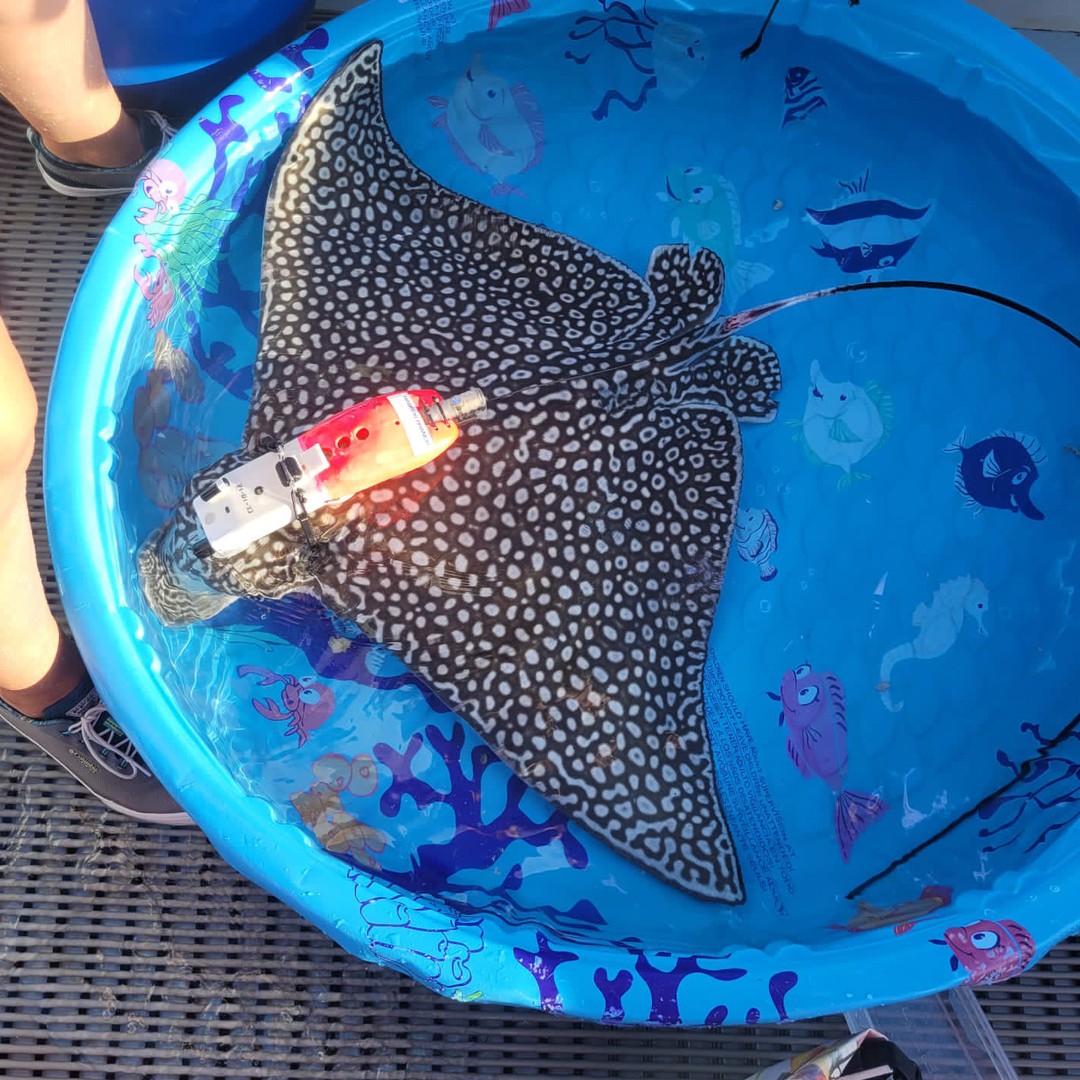Summary:
1. Research Project: Breaking ground with underwater sound
2. Camera tags on Spotted Eagle Rays
3. Underwater acoustic array off Trunk Island
4. The importance of studying predator-prey interactions in marine benthic communities
5. Conservation efforts for Spotted Eagle Rays
The Bermuda Aquarium, Museum, and Zoo (BAMZ) and the Bermuda Zoological Society (BZS) have been working tirelessly on an exciting research project in collaboration with Dr. Matt Adjemian and his colleagues from Florida Atlantic University – Harbor Branch and Woods Hole Oceanographic Institute. This project, funded by the National Science Foundation, aims to unravel the elusive predator-prey interactions in marine benthic communities using novel technological approaches. Specifically, the team is focusing on studying the feeding behaviors of Spotted Eagle Rays, which are both unique and fascinating.
One of the main techniques employed by the BAMZ teams is deploying camera tags on the Spotted Eagle Rays. These camera tags provide crucial data on the rays’ diet and foraging techniques. If you are around Harrington Sound and Flatts Inlet in Bermuda, you might have seen the BAMZ team driving around at all hours, placing bright pink tags on the rays. Don’t be alarmed; these tags are attached to the rays using suction cups and small dissolving “hooks” that fit snugly into the ray’s spiracles. This system is entirely harmless to the rays, and the tags are specially designed to detach after 12 hours. Once detached, the team can track the tags’ location using GPS and retrieve the tags and the valuable data they contain.
In addition to the camera tags, the BZS Education Team and Conservationist Camp deployed an underwater acoustic array off Trunk Island several weeks ago. This array continuously collects data and plays a crucial role in the research project. Underwater acoustics is a game-changer in understanding predator-prey interactions, as it provides unique insights into the otherwise hidden world beneath the waves.
You might be wondering why studying predator-prey interactions in marine benthic communities is so important. These interactions play a vital role in maintaining the health and balance of marine ecosystems. By unraveling the complexities of predator-prey relationships, scientists can gain valuable knowledge to inform conservation efforts and promote sustainable management practices.
Consider the Spotted Eagle Rays, for example. These magnificent creatures serve as both predators and prey in their marine environment. By understanding their feeding behaviors and interactions with other species, researchers can assess the entire ecosystem’s health. Spotted Eagle Rays feed on benthic organisms such as mollusks, crabs, and shrimps. Studying their diet and foraging techniques can provide insights into the abundance and availability of their prey, which, in turn, can indicate the ecosystem’s overall health.
Conservation efforts for Spotted Eagle Rays are also a crucial aspect of this research project. With their unmistakable spotted patterns and graceful movements, Spotted Eagle Rays are captivating to observe and face various threats in their natural habitats. Habitat destruction, overfishing, and entanglement in fishing gear are just a few challenges they encounter. By understanding their predator-prey interactions, scientists can advise policymakers and stakeholders on effective conservation measures to protect these incredible animals.
In conclusion, the BAMZ and BZS teams, alongside their collaborators, are embarking on a groundbreaking research project exploring Spotted Eagle Rays’ underwater world. They shed light on the predator-prey interactions in marine benthic communities by deploying camera tags and underwater acoustic arrays. By studying these rays’ diet and foraging techniques, scientists can gain insights into the ecosystem’s health and inform conservation efforts. Their dedication and hard work pave the way for a better understanding of nature’s intricate web of life and inspire us all to appreciate and protect our wildlife and their habitats.
*****
Source Description
The BAMZ and BZS teams have been working hard to assist Dr. Matt Adjemian and his colleagues from Florida Atlantic University – Harbor Branch and Woods Hole Oceanographic Institute with their National Science Foundation-funded research project: “Breaking Ground with Underwater Sound, unraveling elusive predator-prey interactions in marine benthic communities using novel technological approaches.” The team is specifically researching the feeding behaviors of Spotted Eagle Rays.
The BAMZ teams have been helping deploy camera tags on severalty Eagle Rays to get amon on their diet and foraging techniques. You may have seen the team driving around Harrington Sound and Flatts Inlet morning, noon and evening. The bright pink tags are attached to the ray using suction cups and two small dissolving “hooks” naturally fitting into the ray’s spiracles. This system does not harm the ray and is specially designed to pop off in 12 hours so the team can track it by GPS and recover it and the data.
The BZS Education Team and Conservationist Camp helped deploy an underwater acoustic array off Trunk Island several weeks ago that has been collecting data continuously.

